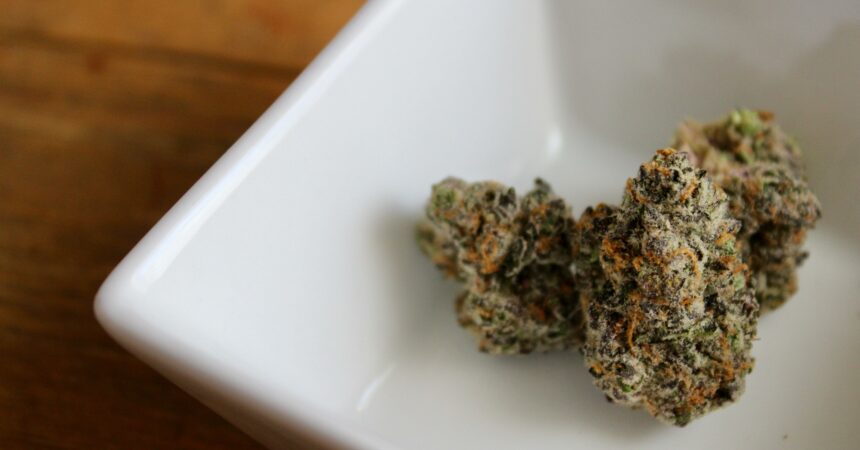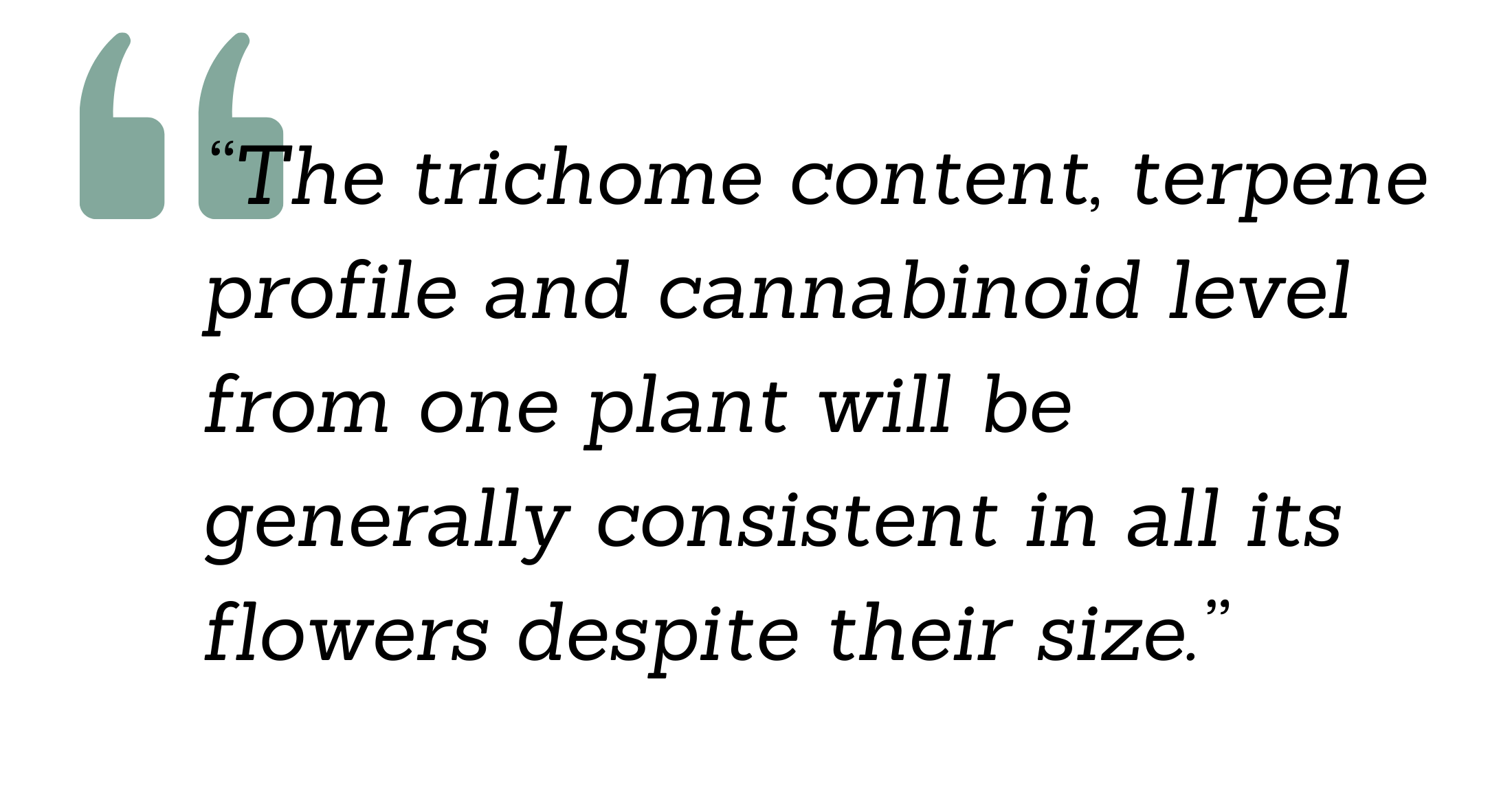When it comes to cannabis, does size really matter?

By Dan Cohn
Imagine walking into a movie theater and stopping by the concession stand to find they sell buckets of loose popcorn for a small price, or, for a premium, you could have one gigantic popped kernel. Sure, walking into the theater with a huge hunk of corn would turn some heads, but is it any more satisfying?
Now apply this concept to cannabis and we have to ask the question — are consumers really getting more for their money by skipping over smaller buds?
ARE BIG BUDS BETTER?
B-Flower, also sometimes known by its slang name popcorn bud, grows near the bottom of the plant and is the result of environmental stressors like excessive heat and lack of light, or at times, potentially genetics. These conditions produce underdeveloped flower that don't grow as large as the big, beautiful colas.
While some growers will “top” the colas to allow the “lowers” to keep growing and put on any extra possible size, many growers choose to remove them completely during the flowering stage so as to not inhibit growth at the apex of the plant. However, despite sometimes being labeled as inferior, these fun-sized nugs possess all the same qualities as their larger counterparts.

Pat Reynolds, Operations Director at Confidence Analytics, a cannabis testing laboratory, agrees. Reynolds says, “when I look at a smaller indoor plant and I take a sample from a cola, which is where all the goodness is concentrated, and compare that to a bud that I’d take from a lower part of the plant, the difference is minimal, in terms of overall cannabinoid content and terpene content. When I do that with an outdoor plant, one of these really massive deals, then you’re going to see some difference between something that’s at the top of the plant that’s exposed to the sun, and something that’s in the shade at the bottom.”
When plants are raised indoors, growers have full control over every factor of development. This leads to more consistency and higher production of trichome content overall. In outdoor grows, however, there are many more unpredictable variables that affect the outcome of the crop; sometimes enough to raise concern.
“If you had an outdoor plant and you test the cola at 20% THC, you might test one of the buds from the lower branches at, say, 15%. If you were a buyer in Washington State, 15% would be a deal killer. You want the 20% -- that’s sort of your cutoff point,” Reynolds explains. “But,” he points out, “I guarantee as a consumer, sitting down and smoking it, you would not notice the difference.”
Considering different growing, curing and processing practices — the trichome content, terpene profile and cannabinoid level from one plant will be generally consistent in all its flowers despite their size. Jay Kitchen, host of Uptown Growlab’s daily cannabis live stream and author of high-level grow guide The Kitchen, explains the qualities of A-Flower.

“Because there’s more… there’s more! There are more trichomes, there’s more resin, there’s more THC covering more surface area on the big flowers than the small ones. You’re going to get a fuller smell, fuller sensory experience when you crack open a larger nug as opposed to a smaller one,” says Kitchen.
In response to the argument that B-Flower has less of these attributes, Jay suggests, “I think they have less only because they’re smaller.” More importantly, the way in which all of these compounds react to one another, known as the entourage effect, will produce a similar buzz regardless of bud size.
PERSONALITY MATTERS MORE THAN SIZE
What seems to matter more than size is physical appeal and marketing. A half-ounce of B-Flower could save the buyer money, but as Jay explains, “people want bag appeal, and popcorn buds don’t have it. Even if they’re pretty, they don’t have the same kind of appeal as a big, honkin’ chunk of weed that reeks. A lot of it is aesthetic.”
Lara Kaminsky, Program Director at Confidence Analytics, adds “I think it’s more of a cultural [factor], like, ‘Oh, look at that big bud! It must be better!’ — when ultimately the science doesn’t really point to that being true.”
Kitchen makes an important point, however, that “when you deconstruct a flower, like one of those 6” colas, it’s made up of small flowers,” in addition to stem. In fact, sometimes b-flower isn’t the result of growth at all, but of the processing process.

This critical fact breaks down the barrier between flowers from top to bottom and means that any product of the same plant will deliver comparable effects, regardless of location. Even if there are slight testing differences, the overall effect on an individual shouldn’t be enough to notice. Reynolds from Confidence Analytics goes as far as to say, “as a consumer, I would think that, if you were to do a blind test, [you’d] be hard put to call out the difference between smoking an A-Flower versus a B-Flower.”
B-Flowers have plenty of value, and it comes down to the consumer’s preference that determines how much they’re willing to spend. Top shelf fatties can be good for showing off to friends or marking a special occasion, but the “crumblin’ herb” or “bong buddies” will get consumers just as stoned with some money left over for papers, pizza and pipe cleaners.
For growers and wholesale buyers, B-Flower can bring in some extra money or be converted into other THC products like butter, hash or full flower premium joints without wasting any of the plant. What B-Flower lacks in size, it totally makes up for with personality.

Dan Cohn is a drummer, audio engineer and music aficionado who enjoys using cannabis to fuel thoughtful conversation, critical listening and relaxing. The first time he made weed brownies, he cut the whole pan into six mega brownies and ate one before a friend's 18th birthday bowling party. He didn't make it to the party.
